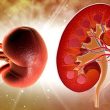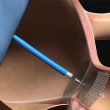The presence of stroke after TAVR has dropped and is currently at 2%; however, it is 5 times more deadly, has negatively affected quality of life and has increased healthcare costs. The ASTRO TAVI registry included 14 centers and 16615 TAVR procedures between 2006 y 2021. In this period, there were 484 neurological events within...
EuroPCR 2022 | Changes in Cardiac Damage after Surgical Aortic Valve Replacement
This study presented at EuroPCR 2022 analyzed the PARTNER study pool and included 1974 patients with a complete echocardiogram. Surgical risk was 17.3% extreme/inoperable, 54.3% intermediate and 28.4% low. 60% received transcatheter aortic valve replacement (TAVR) and the rest surgical aortic valve replacement (SAVR). 6.1% of patients were in stage 0 (no damage), 14.5% were...
Is High Mean Gradient After Edge-to-Edge Strategy Important?
Edge-to-edge treatment of the mitral valve is currently a valid alternative to surgery in cases of mitral regurgitation. Different studies have taken residual mitral regurgitation as a parameter of success, but little research has been conducted on the residual gradient once the procedure has been completed. What has been published is that a mean gradient...
Transcatheter Edge-To-Edge Repair Is Favorable for Elderly Patients at High Surgical Risk
Mitral valve prolapse is the most frequent cause of mitral valve regurgitation and is associated to hospitalization for cardiac failure and mortality. At present, the preferred treatment for operable patients is mitral valve surgical repair. Transcatheter edge to edge repair (TEER) has shown great benefit patients at high surgical risk; however, it has not been...
Should We Start Using OCT in Myocardial Infarction with Non-Obstructive Lesions?
In ST elevation MI, the common assessment methodology continues to the angiography; however, we all know it has certain limitations, especially when it comes to intermediate lesions or coronary dissections. Using imaging, especially high resolution such as OCT, has been looked into by some studies, but never randomized studies. The EROSION III is a randomized...
Hypertrophic Cardiomyopathy: Analyzing a Historical Series
75% of patients with hypertrophic Cardiomyopathy present symptoms. An important group responds very well to pharmacological treatment with betablockers and calcium antagonists, and those who do not respond, or do not tolerate these drugs, receive, at present, surgery as elective treatment. There is also alcohol septal ablation as an alternative strategy, which different studies have...
Avatar Trial: Is It Time to Use Surgical Aortic Valve Replacement in Asymptomatic Patients?
It is still unclear whether surgical aortic valve replacement (SAVR) is beneficial in asymptomatic patients with severe aortic stenosis (AS) and conserved left ventricular function (C1 indication according to AHA guidelines). The European American guidelines only recommend intervention in asymptomatic patient when there is ventricular compromise (ejection fraction <50%, class I indication) or with a...
In Multivessel Disease, When Should Renal Impairment Be Considered?
Cardiovascular disease is one of the main causes of morbidity and mortality in patients with advanced chronic kidney disease (CKD), and vice-versa. Both diseases share risk factors, including, but not limited to, diabetes, high blood pressure, smoking, dyslipidemia, and old age. As kidney disease develops, its severity grade has been linked to more thrombotic events...
Should We Use Left Atrial Appendage Occlusion More Frequently? What Real-Life Data Are Available?
Left atrial appendage occlusion (LAAO) is an alternative to prevent atrial fibrillation stroke mainly used in patients at high risk for bleeding. One of the most widely used devices in randomized trials is the Watchman, which yielded promising results. However, its real-life performance had yet to be analyzed. Researchers conducted an analysis of the National...
WOEST 2 | Dual Versus Triple Antithrombotic Scheme in the Real World.
The WOEST study found a significant reduction in bleeding complications post PCI with oral anticoagulation indication (OAC) when treating patients with dual antiplatelet therapy (DAPT) vs. the triple antithrombotic scheme. Several randomized studies have shown these results. At present, the guidelines recommend using the triple antithrombotic scheme in patients according to ischemic and bleeding risk. ...








